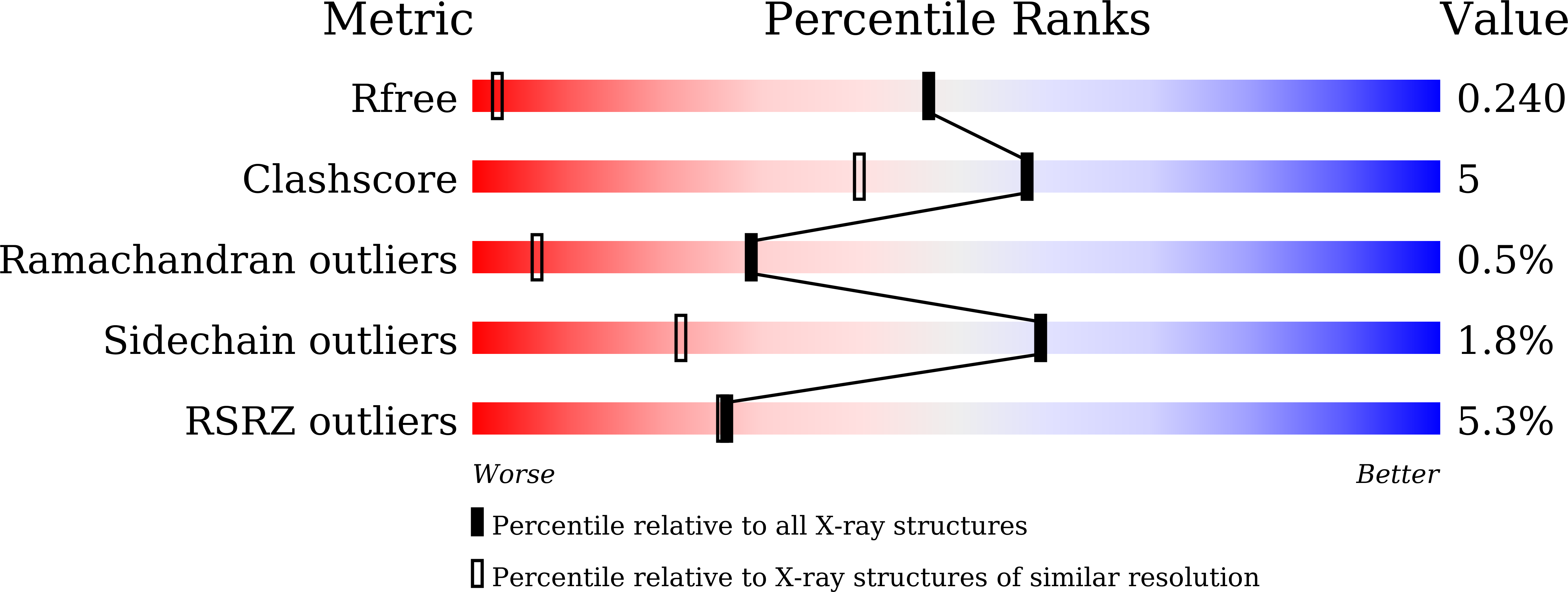A Structural Change in Butyrophilin upon Phosphoantigen Binding Underlies Phosphoantigen-Mediated V gamma 9V delta 2 T Cell Activation.
Yang, Y., Li, L., Yuan, L., Zhou, X., Duan, J., Xiao, H., Cai, N., Han, S., Ma, X., Liu, W., Chen, C.C., Wang, L., Li, X., Chen, J., Kang, N., Chen, J., Shen, Z., Malwal, S.R., Liu, W., Shi, Y., Oldfield, E., Guo, R.T., Zhang, Y.(2019) Immunity 50: 1043
- PubMed: 30902636
- DOI: https://doi.org/10.1016/j.immuni.2019.02.016
- Primary Citation of Related Structures:
5ZXK, 5ZZ3, 6ISM, 6ITA, 6J06, 6J0G, 6J0K, 6J0L - PubMed Abstract:
Human Vγ9Vδ2 T cells respond to microbial infections and malignancy by sensing diphosphate-containing metabolites called phosphoantigens, which bind to the intracellular domain of butyrophilin 3A1, triggering extracellular interactions with the Vγ9Vδ2 T cell receptor (TCR). Here, we examined the molecular basis of this "inside-out" triggering mechanism. Crystal structures of intracellular butyrophilin 3A proteins alone or in complex with the potent microbial phosphoantigen HMBPP or a synthetic analog revealed key features of phosphoantigens and butyrophilins required for γδ T cell activation. Analyses with chemical probes and molecular dynamic simulations demonstrated that dimerized intracellular proteins cooperate in sensing HMBPP to enhance the efficiency of γδ T cell activation. HMBPP binding to butyrophilin doubled the binding force between a γδ T cell and a target cell during "outside" signaling, as measured by single-cell force microscopy. Our findings provide insight into the "inside-out" triggering of Vγ9Vδ2 T cell activation by phosphoantigen-bound butyrophilin, facilitating immunotherapeutic drug design.
Organizational Affiliation:
School of Pharmaceutical Sciences, Beijing Advanced Innovation Center for Structural Biology, MOE Key Laboratory of Bioorganic Phosphorus Chemistry & Chemical Biology, Tsinghua University, Beijing 100084, China.














